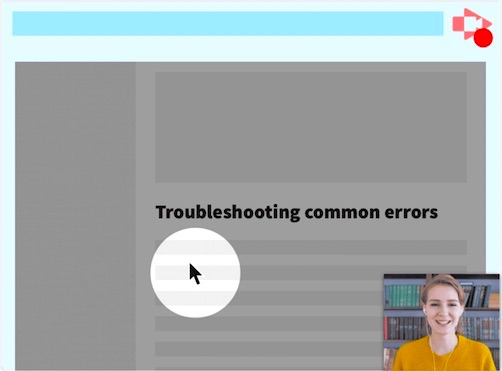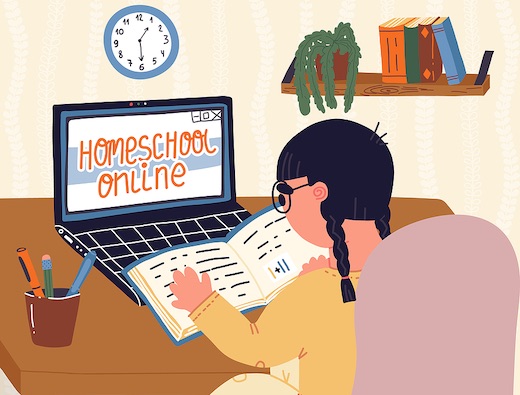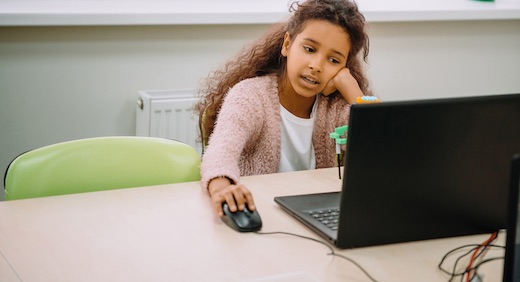Becoming the Virtual Teacher My Students Need
Since March and the closing of physical school my teaching has begun to transform. That’s been a good thing – a time of true discovery.
Forced to learn how to be an effective virtual teacher of fifth graders, I’m gaining a deeper understanding of all the professional learning I’ve eagerly pursued over my career.
All the books and research I’ve read, the classroom experiments I’ve carried out, the insights I’ve gained through my NBCT journey are fueling a transformation that began out of necessity but has become illuminating.
From this point forward, online or in a physical classroom with kids, I will be a better educator. Here’s why.
Some background
Understanding learners and how they learn has always been one of the key components of my planning. Since my college days I have read widely, considering many points of view about how students learn.
I studied Dr. Howard Gardner’s work on multiple intelligences, which is a rationale for varying instruction. This is the understanding that we all have multiple ways of receiving information benefitting from varied teaching strategies.
Then I explored learning styles using the VARK model, which is the acronym of the four types of learners: visual, auditory, reading/writing preference, and kinesthetic, based on the understanding that children learn differently.
Then I began learning more about the work of Dr. Carol Dweck, delving into the nuances of growth mindset (continued effort leads to success) and fixed mindset (the belief that one is either good or bad at something). I saw the principles of growth mindset make a positive difference in my classroom (as it had in my own life).
I’ve come to see that engagement is keeping students interested in the focus of the concept or skill, and it begins to flow once I have a good understanding of my students. Traditionally, in my physical multi-subject classroom, I would use what I considered best practice, and provide a mini-lesson, no longer than 10 minutes, that would help guide our focus on the essential question as students broke into small groups.
Rotations were a daily routine as students would move with their group through “Teacher Time,” “Problem Solving,” “Facts Practice,” and an “Exit Ticket” finisher. Blending in a Google Classroom space provided an extra dimension to our learning, an “anytime” place in the digital cloud where I would post extra resources, add homework assignments, and keep parents informed.
My small groups were created based on my knowledge of my students, tapping into my understanding of learners. I considered how students had performed in the past, what I’d observed, and where I felt they needed more guidance. The rotation of small-group “Teacher Time” is where I provided the differentiation in regard to breaking down the concept or skill. As I observed growth or a need for intervention, I made adjustments to the groups and also provided individualized time later in the day.
This was how we learned in my pre-pandemic 5th grade classroom.
Then it all changed.
The world of learning in a physical classroom became a thing of the past – at least for the foreseeable future. We were now virtually teaching and learning.
How would I engage my students and meet their needs? Thankful for the technology and digital resources already in place in my school system (Google Classroom and various online external resources and outsourced content), I began to plan my lessons for a virtual setting.
I had always felt I was “tech savvy.” I had attended workshops on using Google Classroom, used my interactive whiteboard, and shared resources found online with my classes. I soon realized what I knew and had done in the past was just a glimmer of what would be needed for remote learning in a virtual school environment.
I was grateful once again for my own growth mindset as I began to rethink my teaching practice in this new world. I needed to give myself permission to experiment and begin to expand my practices. I had to consider what it means to be a teacher who is no longer defined by classroom walls. I had to rethink learner engagement and reimagine my strategies and tactics if I had any hope of teaching my students the necessary skills they would need to grow without any major stumbles along their educational path.
Classroom management was no longer being in close proximity and giving that gentle glance or casual tap on a desk to gain attention. It was now all about capturing my students’ interest and pulling them into lessons at a distance, on a screen.
This is where all of my past reading and study came into play. As I began to experience the reality of daily teaching online, I soon found myself pulling from all that I’ve learned about the varied ways students receive information.
Teaching became less about learning styles and teacher-directed instruction and more about developing growth mindset and self-efficacy – finding learning strategies that would have my students wanting to put forth effort and work toward success, to not give up when at first they didn’t succeed.
In other words, I needed to virtually engage my students. I needed to be the voice they heard and the face they saw. I needed to encourage them and offer daily virtual class times using Google Meets for math and other subject areas. I needed to set aside additional “Teacher Time” where students could come, ask questions, and have a concept or skill reviewed, or simply talk it out.
Finally – and this was critically important – I needed to engage my students’ parents, guardians and caregivers in our learning. I quickly came to see (as many teachers have in the last six months) that virtual school really benefits from the support of an adult partner at the child’s end of the connection, someone who can help me ensure a sustained learning experience.
How I reshaped my teaching
Planning my lessons, I used three key components: student knowledge, ability/skill, and concept. I would meet “live” with my class to provide direct teaching and shared practice. Looking at the resources I was once willing to “push out” to my students during our traditional learning days, I realized I needed to step up and out of my comfort zone and create my own easily accessible and user-friendly materials.
Soon, I found myself creating Google Slides that would be visually appealing. I’d then go over the lesson and slides to bullet out my “script” to help me with my instruction, adding my own commentary – much as my students were used to in our classroom. I used the Screencastify app to record, taking full advantage of their offer of premium recording time for the school year.

In my classroom I always worked toward an in-person mini-lesson to be no more than 10 minutes, I was now faced with a new time goal – no longer than 6 minutes per video. Why six minutes? To be honest, when I began to record, I took advantage of the generous time allotment at Screencastify and would record 10-minute videos. While these were helpful to many students, I soon learned during our virtual class meetings that some students only “half watched” toward the end of the video.
My new goal was to continue to provide good visuals, to animate just enough to engage but not overwhelm, and to be mindful of saying what I needed to say, keeping it upbeat but not dragging it out. When I analyzed my videos, I realized I had been speaking slower for understanding, rather than in the conversational tone I would have used in our physical classroom. I warmed and softened my delivery.
My fifth grade students (and many parents) thrived during our class Google Meets and used the resources I created and recorded. Many students showed evidence of learning and shared with me that they watched some videos more than once, gaining a better understanding each time.
This was a wonderful discovery. I realized I was offering the opportunity for self paced instruction through my videos. Parents have reached out to me and expressed how much they learned during this time being “part of our class,” which to me is a true silver lining to this whole uncertain and often stressful time period.
What I know for sure now
When and how we’ll return to a physical classroom is still an unknown. I agree with many other educators who believe we will never return to the plain old “normal” that we once imagined school and a school year to be.
While so much is still to be decided, there are a few things I do know for sure:
- We can all be resilient when faced with new challenges;
- Having a growth mindset is not just for kids;
- So much about teaching and learning is yet to be explored and expanded upon for the better – even in uncertain times; and
- I will keep bringing all that I learn forward as my “best practices” continue to expand and improve in whatever settings we find ourselves.
A Few Resources That Can Help
► How to Coach Parents Who Are Teaching at Home (Edutopia)
► In a Time of Crisis What Can We Learn about Learning Time? (ASCD/EL)
► MINDSET by Carol Dweck | Animated Core Message (YouTube)
Kathleen Palmieri is a National Board Certified Teacher and NBCT Professional Learning Facilitator. She is a fifth grade educator in upstate New York who writes and reviews regularly for MiddleWeb. Kathie’s passion for literacy and learning lands her in many writing workshops, curriculum writing endeavors, and math presentations. She’s also an avid reader and researcher of educational practices and techniques. Collaborating with colleagues and globally on Twitter @Kathie042500 is an ongoing practice.

































Thank you for your honesty and insights. You nailed the areas we face as challenge. I appreciate the growth mindset for ME!
Thank you, Kayte. I’m happy to know you enjoyed my article. Having a growth mindset is important. Have a great school year!